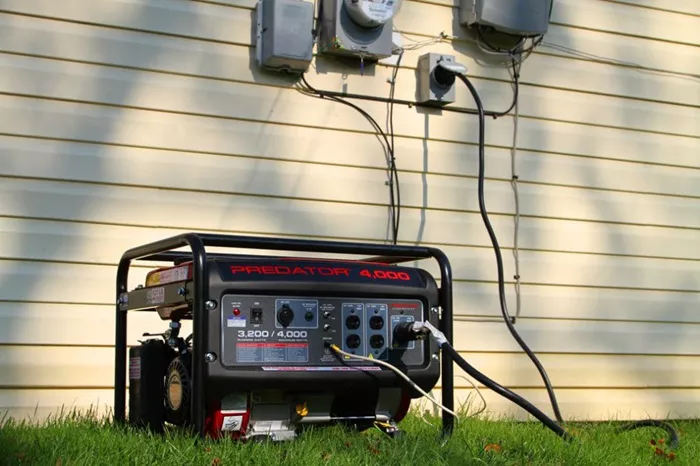When planning for backup power in a 3500 sq ft home, choosing the right size generator is crucial to ensure you can maintain comfort and security during a power outage. A generator that is too small may leave you without power for essential appliances, while an oversized unit may result in unnecessary costs. Here’s a breakdown of the key factors to consider and some top generator models to help you make the right choice.
Recommended Generator Size for a 3500 Sq Ft Home
For a home of 3500 square feet, the ideal generator size typically falls between 12 kW to 20 kW. This range provides enough power to run essential appliances, HVAC systems, and allow for startup surges that appliances with high power demands often require. Let’s take a closer look at the factors that influence your generator needs.
Factors to Consider
Power Needs
The first step in choosing the right generator is calculating the total wattage required to power your essential appliances during an outage. Start by listing the appliances you need to run, such as refrigerators, lights, televisions, and water heaters. Don’t forget about high-wattage devices like HVAC systems, which may require additional power.
Running Watts vs. Starting Watts
While some appliances run on a steady amount of power, others, like refrigerators and air conditioners, require additional “starting watts” to kick on before dropping down to their normal running wattage. Make sure to account for both running and starting watts to avoid underpowering your home.
HVAC Systems
Heating, ventilation, and air conditioning (HVAC) systems are typically among the largest power consumers in a home. It’s crucial to select a generator that can handle both the continuous operation of HVAC systems and their startup surge. For a 3500 sq ft home, the HVAC system may require 5000 watts or more for startup, so a generator capable of handling these surges is essential.
Location and Climate
The geographical location and local climate can significantly impact your generator’s power needs. Homes in extreme climates, where heating or cooling requirements are higher, will demand more from a generator. For instance, homes in colder climates may need more power for heating systems, while those in hotter climates will require greater power for air conditioning.
Types of Generators
Portable Generators
Portable generators are an affordable and flexible option for providing temporary power during an outage. These generators typically supply between 3000 and 8000 watts, making them ideal for homes that need power for a few key appliances. However, they require manual setup, refueling, and ongoing monitoring, which can be less convenient for long-term or frequent use.
Standby Generators
Standby generators are permanently installed and come with an automatic transfer switch (ATS), which automatically turns on the generator when the power goes out. These generators provide seamless power and are ideal for homes with more extensive power needs, including the full operation of HVAC systems, multiple appliances, and lights. A standby generator in the 12 kW to 20 kW range is well-suited for a 3500 sq ft home.
Popular Generator Models
Generac 16 kW
Generac’s 16 kW model is a popular choice for residential use, providing ample power for a 3500 sq ft home. Known for its reliability, this unit can power most essential appliances and systems, including HVAC systems, lights, and kitchen appliances. The Guardian Series is especially favored for its user-friendly features and solid performance.
Kohler 20 kW
For larger homes with higher power demands, the Kohler 20 kW generator is a standout option. It provides more than enough power to handle HVAC systems, water heaters, and other high-wattage appliances. Kohler generators are renowned for their durability and performance, making them a solid choice for homeowners who want consistent and reliable power.
Champion 12 kW
If your power needs are moderate, the Champion 12 kW generator may be a cost-effective solution. This model can handle most essential systems in a 3500 sq ft home, including lighting, refrigerators, and basic HVAC systems, without the higher cost of larger units. Champion generators are known for being budget-friendly while still providing reliable power during outages.
Additional Tips for Choosing and Maintaining Your Generator
Consult the Owner’s Manual
Always refer to the manufacturer’s recommendations for generator sizing and installation requirements. Each generator model will have specific instructions on how to properly size and operate it to meet your home’s needs.
Professional Installation
If you opt for a standby generator, it’s important to hire a licensed professional to install it. Proper installation is key to ensuring that the generator runs efficiently and safely. An incorrect setup can lead to costly repairs and potential safety hazards.
Regular Maintenance
Like any home appliance, your generator requires regular maintenance to ensure that it operates reliably during an outage. Follow the manufacturer’s recommended maintenance schedule, including oil changes, air filter replacements, and load testing. Regular upkeep helps extend the lifespan of your generator and ensures it performs optimally when needed most.
Conclusion
Choosing the right generator for your 3500 sq ft home is crucial to ensuring that you’re never left in the dark during a power outage. A generator in the 12 kW to 20 kW range will generally provide the power necessary for both essential appliances and systems, including HVAC units. When selecting a generator, consider your power needs, the climate in your area, and the type of generator that best fits your home and lifestyle. Regular maintenance and professional installation will keep your generator running smoothly and efficiently for years to come.
Related topics:
- What Size Generator to Run a Mobile Home?
- What Size Generator Do I Need for My RV?
- What Size Generator Will Power a Whole House?

